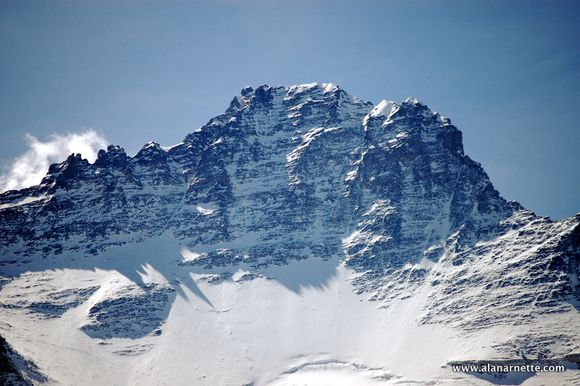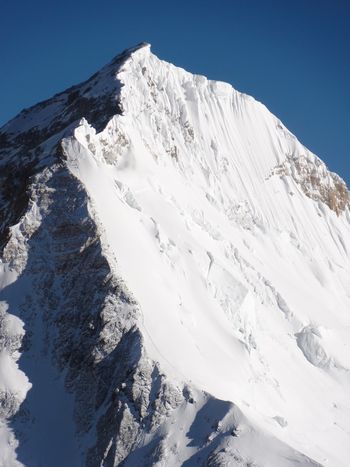
Every Everest climber, actual or armchair, knows the “Lhotse Face” is a difficult section on the mountain that leads to the Death Zone at 8,000 meters. What some people often miss is that the Face is part of the fourth highest mountain on Earth. Lhotse stands 27,940 feet tall.
While I was sitting in the fake Starbucks in Lukla after my successful Everest summit last year, I overheard a middle-aged climber talking to a group of trekkers, “I just summited Lhotse, it is a lot harder than Everest.” The group began to grill him on the details. He rewarded them with tales of “real” climbing, rock fall, and severe altitude—without all the crowds of Everest. “I would never climb Everest,” he sniffed.
I continued to enjoy my excellent latte while reflecting on the most recent addition to my summit list.
Lhotse is gaining popularity with climbers and commercial guides as an alternative to Everest. It costs half as much as an Everest climb, but takes about the same amount of time.
To climb Everest, is almost to climb Lhotse; given they share the identical route up to the Geneva Spur, located on the Lhotse Face. However, there is a real difference. As my friend in the Starbucks boasted, Lhotse features deadly rock fall danger. The final climb to the main summit of Lhotse is through a 500-foot narrow gully that often sheds rocks, large and small.
On my climb, I spent a lot of time with Simon who was climbing Lhotse. We often discussed why he was spending 99% of the same time trying to snag the “lesser” peak. He was consistent in his answer, I want to do something others don’t. That is a common profile of Lhotse climbers. He also was under no illusion that it was easier, or harder, than Everest. It was what it was.
We climbed together and left Camp 3, both on supplemental oxygen, on the Lhotse Face about the same time. I went on to the South Col and Simon turned right, up the very steep face towards Lhotse’s summit and their High Camp. He gave me an update once we both had returned safely to Base Camp.
It was harder than he expected, steep, icy, dangerous. He climbed slowly and carefully and had a great time! Simon was very satisfied with his climb and enjoyed the views of Everest! In fact he took a picture of Everest from the summit of Lhotse that showed me somewhere on my summit bid.

We compared technical difficulty. I felt the snowless Southeast Ridge Slabs were challenging with crampons against rock. He felt the large boulders and sometimes snow-free rock features of the gully were challenging. I felt the altitude and exposure to the fierce east winds were problematic. He felt the summit exposure was unsettling.
He also spoke of his crowds. Going up he was behind a group that accidentally kicked rocks towards them, not uncommon. With Lhotse’s new fame, it seems the crowd factor is shared between the two mountains. We both admired the light from each other’s headlamp going higher on the other peak as we went higher on our own.
So, Lhotse is a great climb right up there with Everest. It is less crowded, requiring a bit more in technical climbing, especially in low snow years. While 1,095 feet lower than Everest, it requires precisely the same preparation, skills, gear and support.
And regardless of which mountain you summit, the same amount of respect is deserved—for both mountain and climber.
Climb On!
Alan
Memories are Everything
Arnette is a speaker, mountaineer and Alzheimer's Advocate. He just completed his 7 Summits Climb for Alzheimer's project to raise $1 million for Alzheimer's research. You can read more on his .